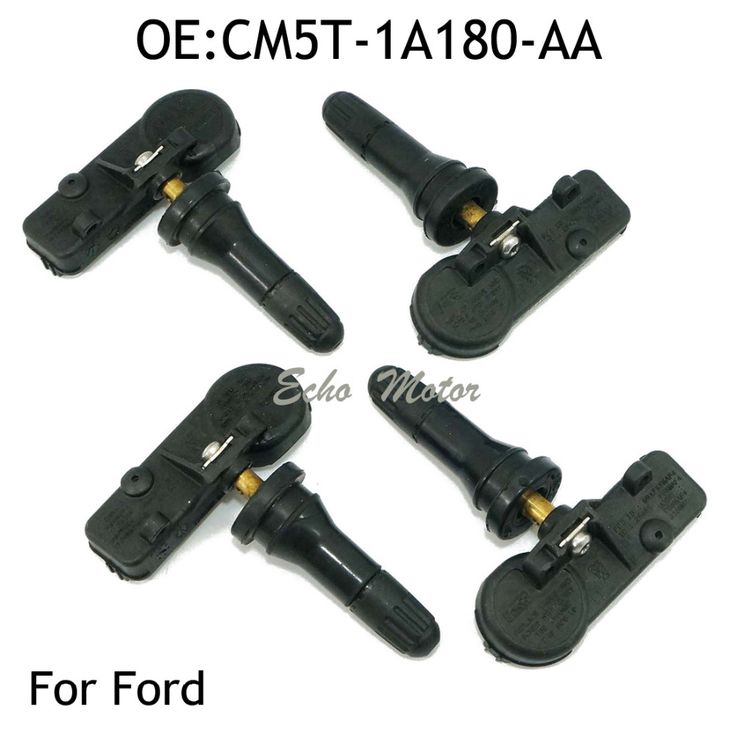GM TPMS systems on Buick, Pontiac, Chevy, GMC, Cadillac and Hummer models are some of the easiest to service if you have the right tools and knowledge. Starting in 2007, most vehicles use a TRW-, Schrader- or VDO-manufactured system that all share the same relearn procedures and behaviors, with only a few exceptions (like the Pontiac Vibe).
Shops should use a TPMS tool to reset the sensor positions after rotation. There is a method in the owner’s manual to “match” the sensors that involves deflating a tire for eight seconds.
To see if a code has been set on vehicles with or without a driver information center (DIC), turn the key on without starting the engine, and the TPMS light will blink for one minute and then stay on with a Service Tire Monitor System message. If that occurs, a TPMS system problem exists. On vehicles equipped with a DIC, a SERVICE TIRE MONITOR type message will also display.
When the road tire is repaired and reinstalled in the original location, the TPMS indicator icon illumination and DIC message may remain displayed until the DTC is resolved and cleared.
The initial “low tire” light is similar to the “low fuel” indicator and adding air to the low tire will extinguish the light. If the driver re-inflates the low tire, they must drive a short distance for at least 30 seconds before the sensors recognize the increase in pressure and turn the light off again. If the deflation is rapid, it will give a more immediate signal by flashing a warning light.
A GM TPMS has pressure, temperature and acceleration sensors. The unit also has a radio transmitter, receiver and battery. Sensors have an estimated 10 year/150,000 mile battery life (GM’s estimate). The antenna and receiver are the same as those used for the keyless-entry system. The antenna is typically sandwiched between the layers of glass in the front or rear glass, but some vehicles have a dedicated antenna mounted in various places.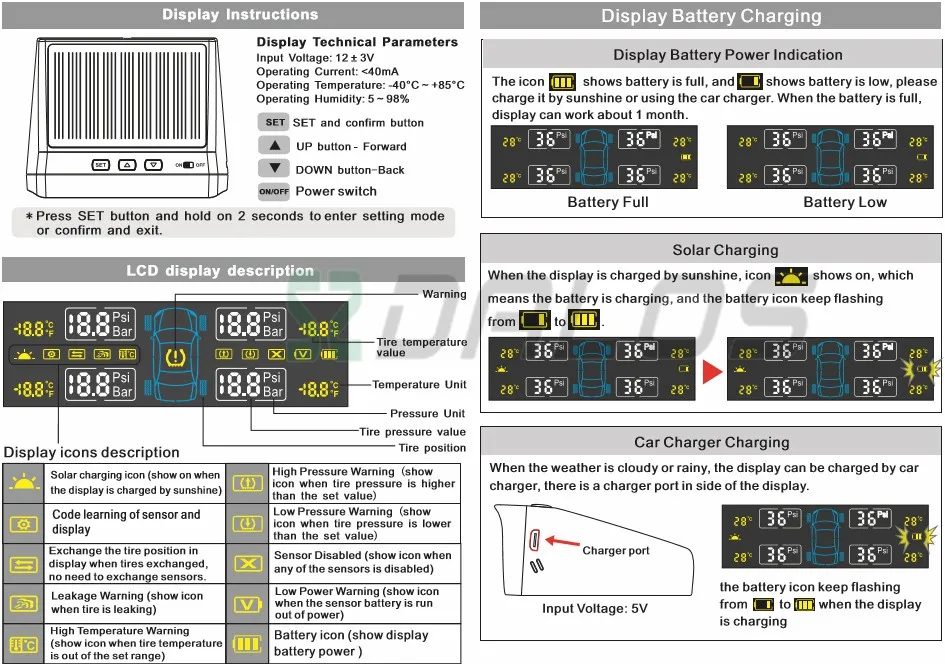
The keyless-entry module communicates with the TPMS sensors and relays the information with the Body Control Module (BCM) on the CAN BUS. If the keyless-entry module or BCM is replaced, the sensors must be relearned. Same goes for the key fobs.
Each sensor has its own unique ID number. If a new sensor is fitted, the BCM must be reprogrammed with its unique ID and its position on the vehicle.
Each sensor takes a pressure measurement sample once every 30 seconds while in stationary mode. If the tire pressure increases or decreases by more than 1.2 psi from the last pressure measurement, another measurement will occur immediately to verify the change in pressure. If a pressure change has indeed occurred, the sensor transmits in learn mode.
Each sensor has an internal low frequency coil, and when the TPMS tool is used in activate mode, it produces a low frequency transmission that activates the sensor. The sensor responds to a low frequency activation by transmitting in learn mode.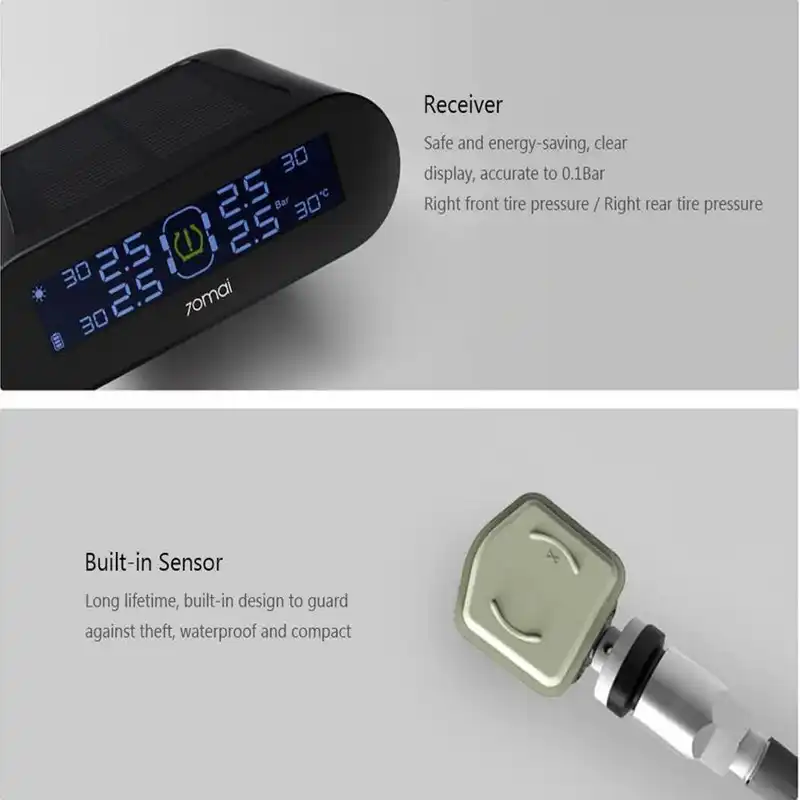 When the TPMS antenna receives a learn mode transmission while in TPMS learn mode, it will assign that sensor’s ID number to the location on the vehicle relative to the order in which it was learned.
When the TPMS antenna receives a learn mode transmission while in TPMS learn mode, it will assign that sensor’s ID number to the location on the vehicle relative to the order in which it was learned.
• It is best to perform the TPMS relearn procedure in the parking lot away from the shop. This decreases the chances of other radio signals interfering with the relearn process.
• Aim at the sidewall below the valve stem — not at the stem.
• If you cannot get a sensor to initialize, try pushing the vehicle forward a foot or two. The signals can be blocked by components like rotors, calipers and knuckles, so repositioning the vehicle may unblock the sensor. This is far more common on the front wheels.
TPMS Sensor Matching1. Set the parking brake.
2. Turn the ignition switch to ON/RUN with the engine off.
3. Press and hold the keyless-entry fob transmitter’s LOCK and UNLOCK buttons, at the same time, for about five seconds to start the TPMS learn mode. The horn sounds twice indicating the TPMS receiver is ready and in learn mode. This can also be performed using the turn signal arm and the driver information center.
The horn sounds twice indicating the TPMS receiver is ready and in learn mode. This can also be performed using the turn signal arm and the driver information center.
4. Starting with the left-front tire, activate the sensor by holding the TPMS tool aimed upward against the tire sidewall close to the wheel rim at the valve stem location. Press and release the activate button and wait for a horn chirp.
5. Once the horn chirp has sounded, the sensor information is learned and a turn signal will illuminate in the next location to be learned. On most models, the driver-side-front will be next. Once the learn mode has been enabled, each of the sensors’ unique identification codes can be learned.
6. When a sensor ID has been learned, the module sends a serial data message to the BCM to sound a horn chirp. This verifies the sensor has transmitted its ID and has received and learned it. The module must learn the sensor IDs in the proper sequence to determine each sensor’s location.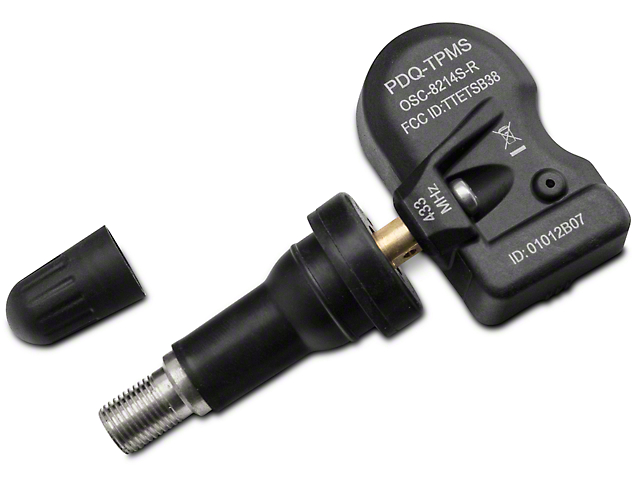 The first learned ID is assigned to the left-front location, the second to right-front, the third to right-rear and the fourth to left-rear.
The first learned ID is assigned to the left-front location, the second to right-front, the third to right-rear and the fourth to left-rear.
The learn mode will cancel if the ignition is cycled to OFF or if more than two minutes has elapsed and no sensor has been learned. If the learn mode is canceled before the first sensor is learned, the original sensor IDs will be maintained. If the learn mode is canceled after the first sensor is learned, the following will occur:
• All stored sensor IDs will be invalidated in the RCDLR memory.
• If equipped, the DIC will display dashes instead of tire pressures.
• DTC C0775 will be set.
These conditions will now require the learn procedure to be repeated for the system to function properly.
Top GM TPMS Tips• If the BCM or keyless-entry modules have been replaced, the modules must be reprogramed and the sensors relearned.
• Many of these systems have been on the road for nine years, so be prepared to deal with mixed sets of sensors from different manufacturers.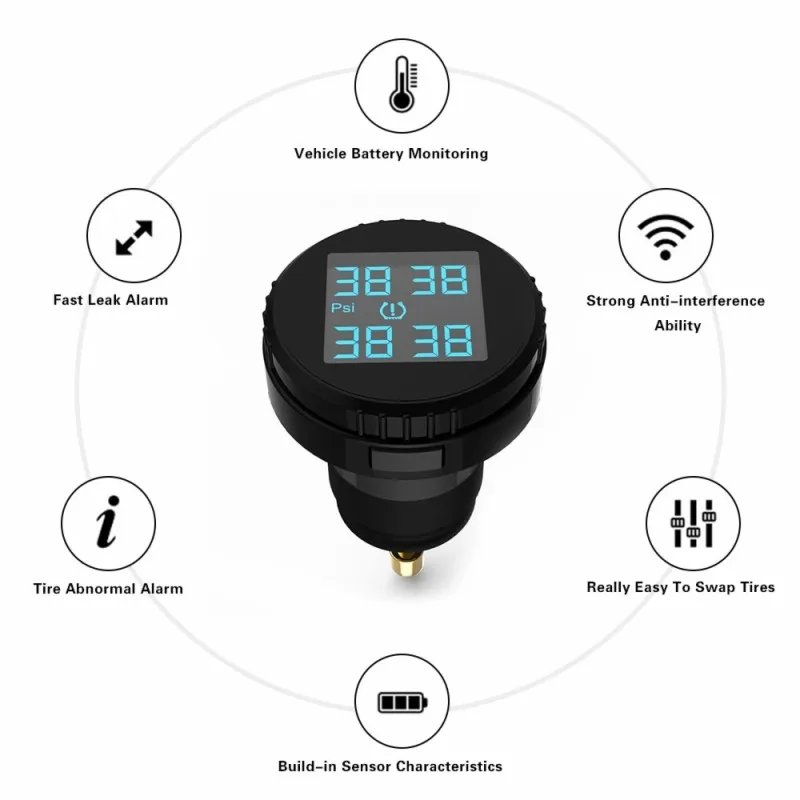
• If the model has snap-in sensors, before installing the valve stem, it is acceptable to lubricate the seating surfaces with an approved tire lubricant. Do not use chassis grease or a grease with petroleum distillates. These types of lubricants can degrade the stem over time and cause a leak. Lubricating the stem can help in the alignment of the sensor on the flats.
• If you encounter a sensor that does not respond when activated by the tool, try activating another sensor that responded previously. This will help you determine if the tool is able to activate the sensor or if you have a problem with one particular sensor.
• When tightening the screw of a snap-in sensor, be mindful of stress on the sensor and the alignment of the sensor. Start the screw for the first couple of threads and make sure the sensor and stem are aligned. When performing the final tightening sequence, stop when the tool clicks to indicate the proper torque has been reached.
• Sensors are getting to be very inexpensive.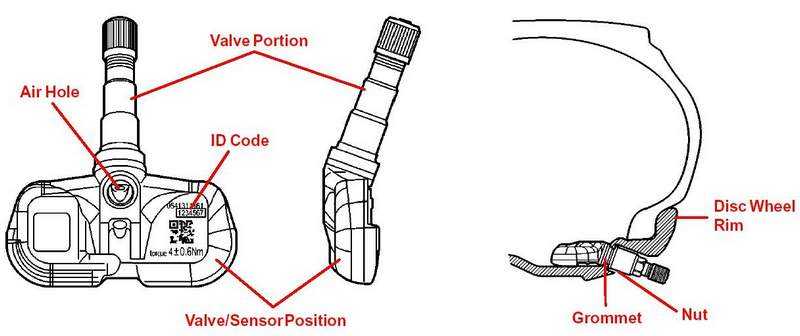 If one sensor dies, consider replacing all of them.
If one sensor dies, consider replacing all of them.
Each TPMS sensor has a unique identification code. The identification code needs to be matched to a new tire/wheel position after rotating the tires or replacing one or more of the TPMS sensors.
The TPMS sensor matching process should also be performed after replacing a spare tire with a road tire containing the TPMS sensor. The malfunction light and the DIC message should go off at the next ignition cycle. The sensors are matched to the tire/wheel positions, using a TPMS relearn tool, in the following order: driver side front tire, passenger side front tire, passenger side rear tire, and driver side rear.
There are two minutes to match the first tire/wheel position, and five minutes overall to matchall four tire/wheel positions. If it takes longer, the matching process stops and must be restarted.
The TPMS sensor matching process is:
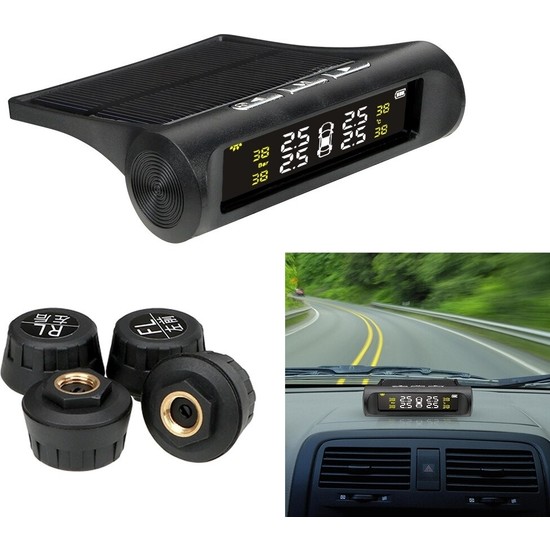

Related Course
View Course
This course, presented by Karl Schneider, covers everything you need to know about TPMS. Karl covers the shop’s legal responsibilities that come with TPMS and how to avoid expensive ramifications. He goes over the three types of sensors you will encounter, how to diagnose and service these types.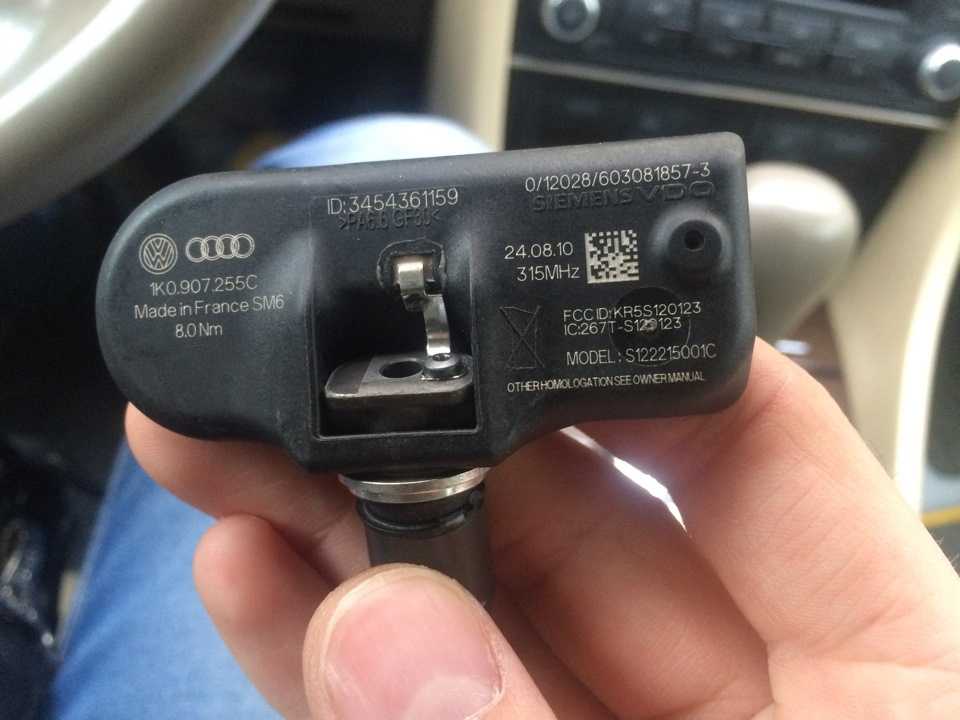 As a wrap-up, Karl conducts some hands-on case studies that will have you feeling confident in your knowledge of properly servicing TPMS.
As a wrap-up, Karl conducts some hands-on case studies that will have you feeling confident in your knowledge of properly servicing TPMS.
Read More
What is TPMS? Well, TPMS is short for Tire Pressure Monitoring System. This is a feature that has altered the dynamics of tire maintenance in recent times. How? Your vehicle’s TPMS system keeps tabs on the air pressure in your vehicle’s tire(s) and lets you know when it is too low for comfort. As such, it has made it much easier for manufacturers, drivers, and mechanics to get the most from vehicle tires; that’s why more people want to know how to program TPMS sensors. The TMPS system is comprised of sensors or pressure traducers that convey crucial information like air pressure, battery state, temperature, and sensor location to the vehicle’s computer.
When the TPMS system detects that your car tire(s) has become extremely low, it triggers a warning light on the dashboard. Ignoring this light increases the risks of patchy tire wear, poor brake performance, and, ultimately, reduced vehicle handling. To avoid this, you need to have functional TPMS sensors in your vehicle. So if you want to know how to program tpms sensors Toyota, for instance, the information you need is in the rest of the article.
Ignoring this light increases the risks of patchy tire wear, poor brake performance, and, ultimately, reduced vehicle handling. To avoid this, you need to have functional TPMS sensors in your vehicle. So if you want to know how to program tpms sensors Toyota, for instance, the information you need is in the rest of the article.
Since you are reading this article, the chances are high that you are looking to take the DIY approach to program your vehicle’s TPMS sensors. It might be challenging when you don’t know how but with the right tools and information, you will get the hang of it with time. How to activate new tpms sensor without a tool? That’s not the focus of this article. Instead, this article will show you how to program TPMS sensors using specialized tools. As for the information you need, here are some things you should know before programming your TPMS sensors.
Modern cars come with any of these types of TPMS systems: indirect and direct systems. The indirect system utilizes an ABS that records accurate tire pressure readings by monitoring the wheel speed. It can be found in some Asian and European car brands, so if you are looking for how to program tpms sensors honda, take note because you might need to perform a relearn procedure with this TPMS system.
The indirect system utilizes an ABS that records accurate tire pressure readings by monitoring the wheel speed. It can be found in some Asian and European car brands, so if you are looking for how to program tpms sensors honda, take note because you might need to perform a relearn procedure with this TPMS system.
On the other hand, direct TPMS systems utilize TPMS sensors situated inside the vehicle’s wheel. These sensors transmit the tire pressure data to the vehicle’s computer in real-time. You can find the direct TPMS system in European and Asian as well as American car brands. It is the TPMS system you will most likely encounter if you are interested in information on how to program tpms sensors Ford f150 or how to program tpms sensors BMW. However, you don’t need to be overly bothered with this because all you need is the right TPMS scan tool that can easily detect the type of TPMS system and show you how to go through with programming the TPMS sensors.
That said, here’s how to program your vehicle’s TPMS sensors.
This is the very first step on how to program tpms sensors Nissan. Programming your vehicle’s TPMS sensor is impossible without a TPMS programming and diagnostic tool that comes with updated software. Once the tool’s software is updated, you can take advantage of the regular manufacturer software updates that make the programming task more manageable.
You probably saw the TPMS sensor light because one of the TPMS sensors on the wheel is blank or faulty. You will need to locate the sensor, and one of the best ways to do that is to use a TPMS scan tool. Finding the sensor will require you to scan each of the sensors’ IDs on the vehicle’s wheels. Take the time to scan wheel after wheel until you get the “no sensor detected” message from the tool. That lets you know the location of the sensor on the vehicle.
One thing to note if you want to know how to program tpms sensors Lexus is that each TPMS sensor comes with an ID number that is programmed into the vehicle’s computer. To get the ID number of the sensor, you might need to scan the car with the diagnostic tool. This enables you to access the ID numbers fed into the body control module or the TPMS module. Thus saving you time and allowing you to get the right ID sensor number. Without programming the right ID number on the TPMS sensor, you will be rendering it invalid as the vehicle’s TPMS system won’t detect it.
To get the ID number of the sensor, you might need to scan the car with the diagnostic tool. This enables you to access the ID numbers fed into the body control module or the TPMS module. Thus saving you time and allowing you to get the right ID sensor number. Without programming the right ID number on the TPMS sensor, you will be rendering it invalid as the vehicle’s TPMS system won’t detect it.
To program a new blank sensor, you will need to follow the program sensor menu steps on the TPMS programming tool you are using. Start by selecting the model and year of your vehicle on the tool. So if you were looking for how to program tpms sensors ford, for example, you should select Ford’s model and year. You then select the “Enter” option to proceed.
You will get several options after that stage, but you want to choose the “Copy Sensor” option. After doing this, you will get two options, but the one to select is the one that says “input ID”. You then follow the arrow on the tool to input the sensor ID number.
The next step is to fit the TPMS sensor into the programming tool. Ensure that the TPMS sensor is of the right frequency before you proceed. Depending on the programming tool you use, there should be pins in it that fit right into tiny holes in the TPMS sensor. Push the TPMS down until it latches into the pins and is firmly held in place. You then secure it with the safety latch. Once the sensor’s frequency matches that of the tool, the sensor is automatically programmed with the ID number. You can get some help from this YouTube Video.
Yes, you can! All you need are the specialized tools and loads of relevant information on how to go about programming your vehicle’s TPMS. So if you have been planning on how to program tpms sensors Subaru without seeing a mechanic, rest assured.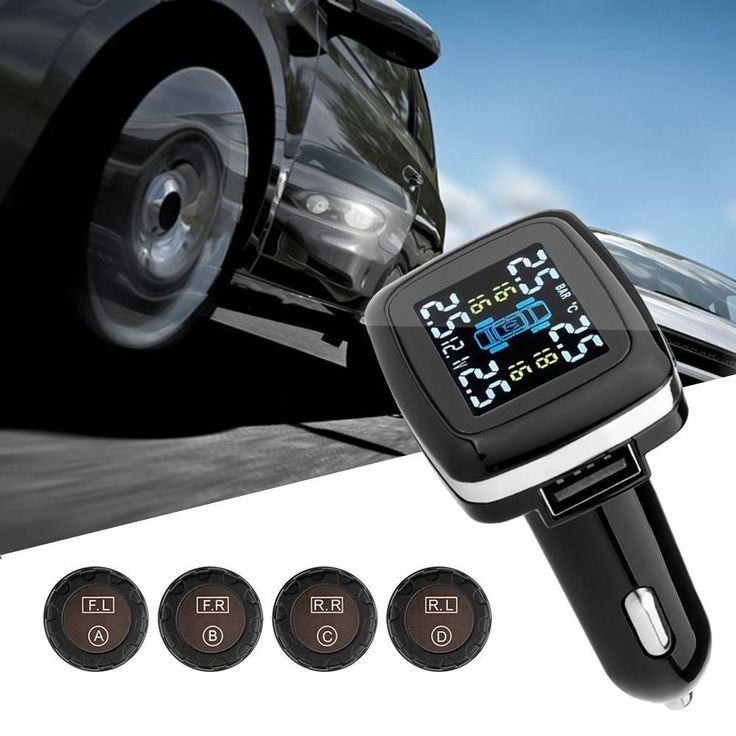 You can program your own TPMS. You just need the know-how.
You can program your own TPMS. You just need the know-how.
That all depends on how you go about it. If you choose to get it done at a repair shop, the costs will depend on the store’s location and the kind of services offered there. For example, the cost of reprogramming the TPMS sensor at an upscale repair shop in New York will differ from the costs at an Alabama repair shop.
Then you might choose to go the DIY way. This option is arguably the cheaper option as you don’t get to pay a service charge. The things you will be paying for are the tools you use and probably the resources from where you got the necessary information on how to go about it.
Yes, you do. After you must have programmed the TPMS sensors, you will need to write a new TMPS sensor ID to the vehicle’s ECU. This process is known as a “relearn procedure” and can only be executed with a TPMS relearn tool.
Well, it depends on the TPMS sensors. For programmable or configurable sensors, yes. These sensors are designed to be programmed or cloned from an OEM or another aftermarket sensor before they can be used in a vehicle. Otherwise, they won’t be recognized by the vehicle’s TPMS system.
Multi-application TPMS sensors, on the other hand, do not need to be programmed because they already come with the programming necessary to work with the vehicle’s TPMS. These sensors help save time while reducing costs.
Driving around in a vehicle with blank TPMS sensors is not the end of the world, but it could lead to avoidable situations.
One great feature that modern vehicles have is the TPMS reset button. This button allows vehicle owners and mechanics to reset the TPMS system easily. You can find the TPMS reset button beneath the steering wheel for most vehicles. However, if you cannot find it there, try looking up the vehicle’s owner’s manual.
Tire pressure monitoring systems (TPMS) have saved many motorists from unnecessary costs and vehicular accidents. A functional TPMS system will alert a driver when the tires have less than optimal tire pressure. This protects the tires from blowing out and causing any complications that might lead to a vehicular accident. That is why your vehicle’s TPMS system must always be working. The TPMS sensors have to be programmed to ensure this, or the vehicle’s computer will not detect them. This means that you don’t get to know when your tire(s) is under-inflated.
The best part about servicing TPMS sensors is that you can do it yourself and save some money. You just need the right parts, the right tools, and the right information. There are loads of online and offline stores to get the right parts and tools. You can get the right information on how to program tpms sensors from reading articles like this one on the internet.
Read More:
In our article you will learn why it is important to regularly check the tire pressure, what is the TPMS sensor, which is part of the tire pressure monitoring system (TPMS - tire pressure monitoring system).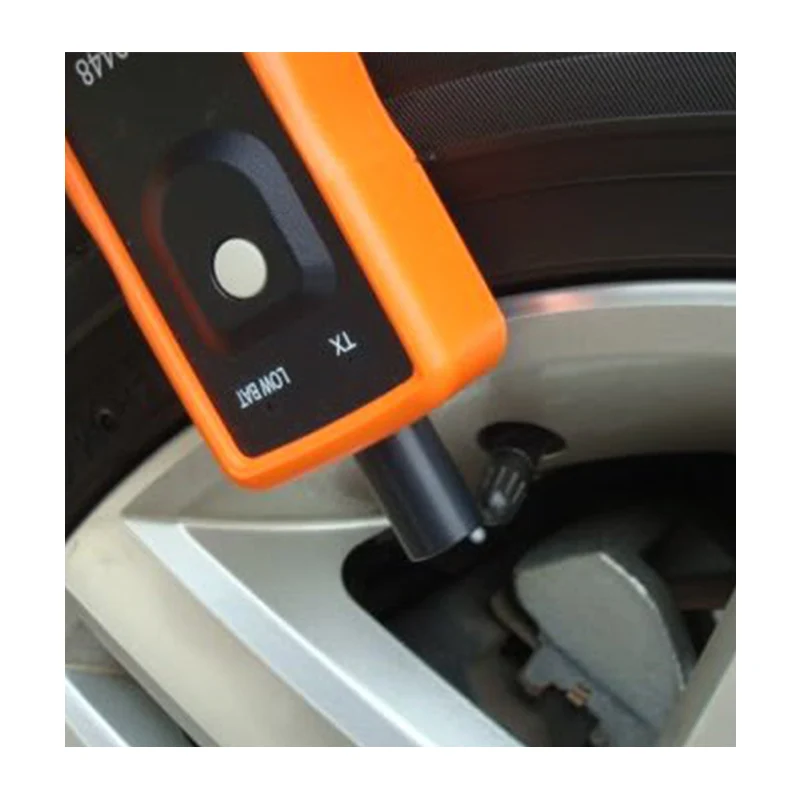
It is important to check tire pressure regularly. This should be done for three reasons:
With long distances, one-time runs and ignoring the regular need for tire pressure, alas, service station motorists often notice a problem only at the stage of a critical pressure loss, when serious damage is evident, and it’s too late to talk about maintenance service and restoration work.
It is a completely different matter if tire pressure monitoring is carried out regularly by means of tire pressure sensors. Many modern vehicles are equipped with not one, but several sensors, they form the TPMS system (tire pressure monitoring system) (TPMS - tire pressure monitoring system).
Pressure control systems are now mandatory in a number of countries. In particular, since November 1, 2014, all new passenger cars sold in the European Union have a TPMS system. In Russia, the presence of the TPMS system has become a mandatory requirement for the certification of new types of vehicles since 2016.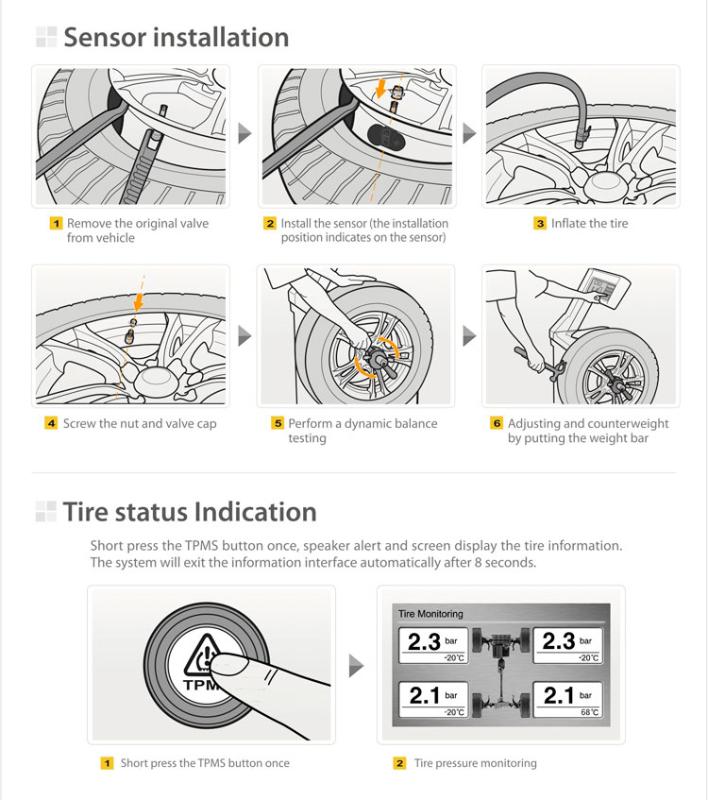 From the same year, TPMS must be on all vehicles that are imported into Russia through the Customs Union. But vehicles that are previously certified or previously imported vehicles may be without TPMS.
From the same year, TPMS must be on all vehicles that are imported into Russia through the Customs Union. But vehicles that are previously certified or previously imported vehicles may be without TPMS.
What is TPMS in a car in practice? First of all, the integration of control sensors and the receiving module. But how the system works, what it is aimed at, differs from its type. This will be discussed a little lower, but for now let's dwell on the question of why measure pressure at all, what its incorrect parameters are fraught with.
The danger of incorrect pressure is the following risks:
It is the air pressure in the tire that is one of the most significant factors affecting the slip resistance coefficient.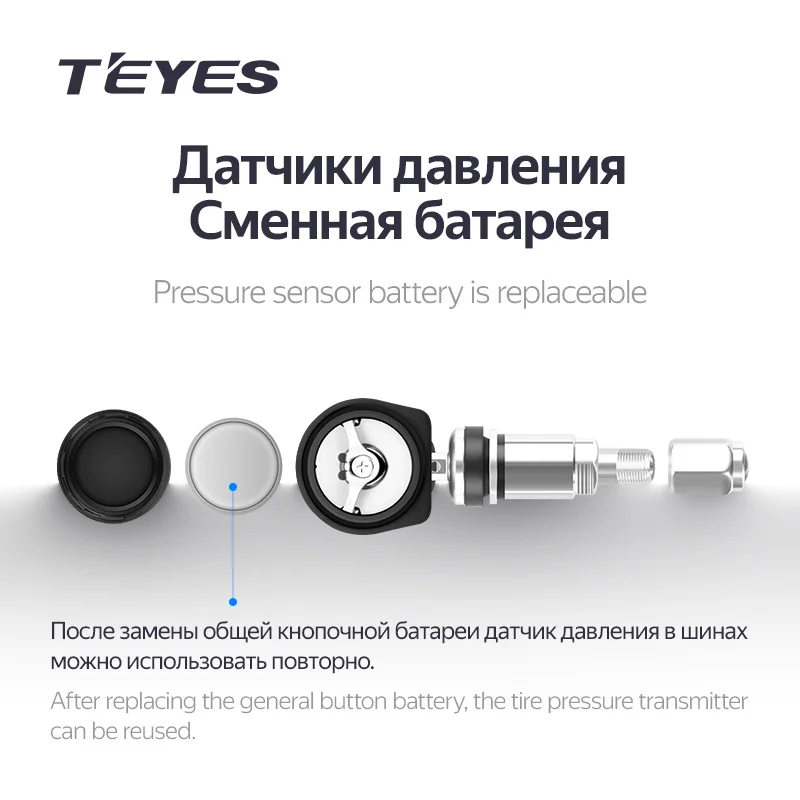
Braking and directional stability are especially negatively affected by the difference in pressure between the wheels on the same axle.
It is also important to remember that air pressure is an unstable phenomenon, within certain limits it can vary under different operating conditions of the vehicle. What does this actually mean? If there are problems with tire pressure (for example, they are unevenly inflated), then when driving in a straight line, the vehicle will be able to go without unpleasant surprises, but as soon as the road begins to wind, problems will begin. In this case, the “walking” nature of the tire will be able to fully manifest itself. It will not be easy to control the radius, the angle of rotation even at low speeds, and at high speeds with uneven tire pressure and an abundance of turns, you can completely lose control of the steering. It is this combination of factors that often leads to an accident.
The danger of operating a vehicle with the wrong tire pressure in winter, when frosts come, increases significantly. It has to do with the laws of physics. When cooled, many objects tend to shrink in volume. In gases, this property is one of the most pronounced. In order to be sure of the correct tire pressure in winter, in cold weather, the pressure must be checked not just regularly, but in relation to temperature changes: in theory, tire pressure measurements are valuable after the vehicle has been in frosty conditions for at least an hour. This pressure (in theory) should be real, and it is this pressure that must be compared with the manufacturer's recommendations and based on these data and (if necessary) corrected. But not everything is so simple: while driving, the tires heat up, which distorts the performance, so most recommendations take into account - even in the cold season, it is customary to take tire pressure not on the street, but in a garage, tire shop. But already at the moment of pumping, you need to think about what pressure difference it makes sense to compensate. And here a competent tire fitter will take into account and combine four factors: manufacturer's recommendations, instrument readings, room temperature, temperature typical for this time of year.
It has to do with the laws of physics. When cooled, many objects tend to shrink in volume. In gases, this property is one of the most pronounced. In order to be sure of the correct tire pressure in winter, in cold weather, the pressure must be checked not just regularly, but in relation to temperature changes: in theory, tire pressure measurements are valuable after the vehicle has been in frosty conditions for at least an hour. This pressure (in theory) should be real, and it is this pressure that must be compared with the manufacturer's recommendations and based on these data and (if necessary) corrected. But not everything is so simple: while driving, the tires heat up, which distorts the performance, so most recommendations take into account - even in the cold season, it is customary to take tire pressure not on the street, but in a garage, tire shop. But already at the moment of pumping, you need to think about what pressure difference it makes sense to compensate. And here a competent tire fitter will take into account and combine four factors: manufacturer's recommendations, instrument readings, room temperature, temperature typical for this time of year.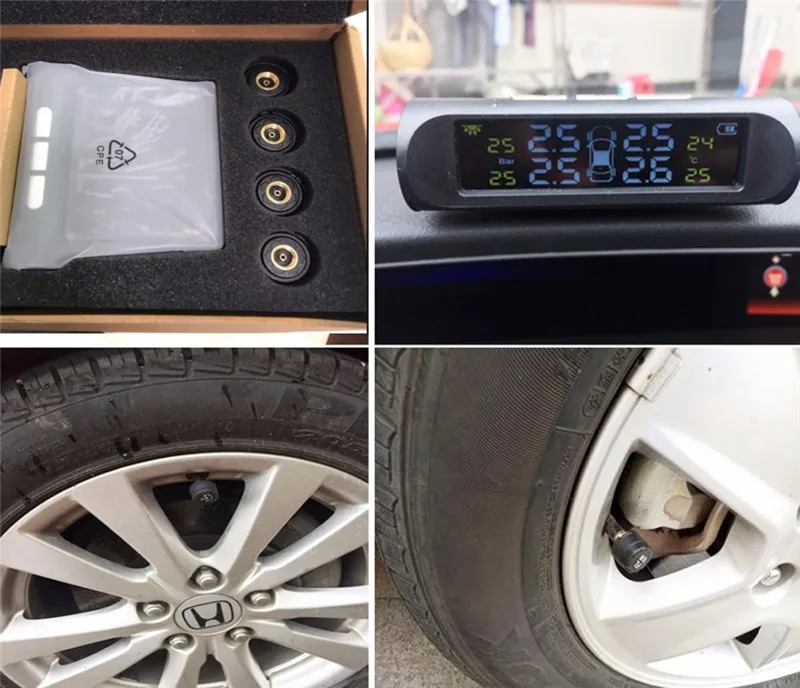
In practice, it “pulls up” problems with itself, both with pressure below and above the norm. A change in the angle of inclination, deterioration in stability, an increase in fuel consumption, as a rule, is associated with a decrease in pressure.
But the pressure is above the norm - this is a direct way to the fact that vibrations will be transmitted to the passenger compartment, the quality of adhesion to the roadway may deteriorate (especially dangerous on slippery roads), and the braking distance may increase.
The tire will wear out unevenly if the pressure is incorrect. This problem is relevant when the pressure is exceeded and when the pressure is underestimated. In the first case, the central part will be the most vulnerable, in the second - the shoulder parts.
Tire pressure sensors are used to measure tire pressure. Tire pressure monitoring is in the zone of the simplest solutions, but more and more often you have to deal with multifunctional sensors. In addition to tire pressure, they control a change in temperature (above, when driving a car in frosty conditions was considered, it was already noted why this is most important), wheel acceleration.
In addition to tire pressure, they control a change in temperature (above, when driving a car in frosty conditions was considered, it was already noted why this is most important), wheel acceleration.
Sensors can be divided into several types. In this case, the classification is carried out according to different criteria:
External sensors are mounted, fixed on the wheel nipples. The most advanced external sensors are equipped with a central unit with a liquid crystal display. They allow you to see both the alarm and the exact digital pressure values in all wheels. But most often, when talking about external sensors, they mean structurally simple and affordable caps with color indicators. Installation of such sensors does not require complex skills. Motorists can carry it out without contacting a car service. It is also easy to use such sensors (the criticality of the situation is determined by the color of the indicator), but, alas, the pressure can only be checked while the vehicle is parked. Another negative point associated with cap sensors is that they are easy to remove and steal.
Installation of such sensors does not require complex skills. Motorists can carry it out without contacting a car service. It is also easy to use such sensors (the criticality of the situation is determined by the color of the indicator), but, alas, the pressure can only be checked while the vehicle is parked. Another negative point associated with cap sensors is that they are easy to remove and steal.
Far from the most reliable option for external sensors - and because of their poor wear resistance. Due to their location outside, they are forced to experience serious aerobic, centrifugal loads. The consequence is a breakdown of the sensor when a stone hits.
Internal sensors are attached directly to the disk (inside). Work on the installation of such sensors is carried out in a car repair shop. A motorist who does not have the knowledge and skills of an auto mechanic, a tire fitter, cannot cope with such work on his own. The main difficulty is that before installing the sensor, it is necessary to remove the tires from the rims.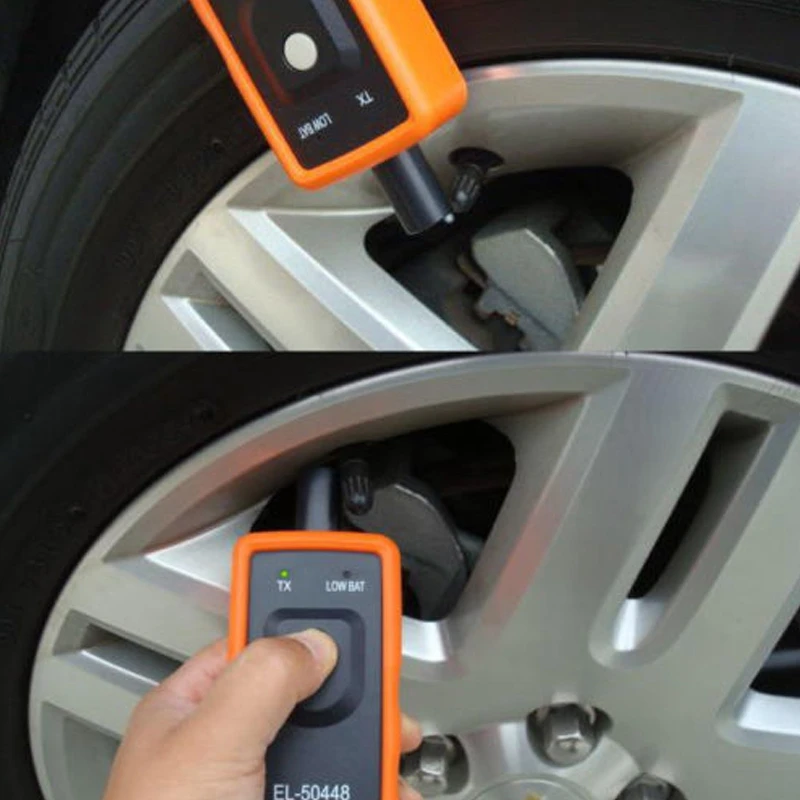
Mechanical meters are structurally as simple as possible. In fact, these are manometers in the form of caps. They indicate the pressure in the wheels in a certain color. For example:
Unfortunately, in order to perform a pressure test, the car must be stopped.
The readings of such devices are the most accurate. Sensors are installed inside tubeless tires or outside the wheel on the spool. The devices are equipped with small batteries. Communication with the central control unit is carried out via a radio frequency channel.
The control and indication module is placed in the vehicle cabin. Inconsistency of readings is signaled by light or sound. Control can also be carried out using a smartphone. To do this, you need to install special software. The main advantage of electric sensors is the constant provision of information to the driver.
But it is important to understand: during the operation of electronic sensors, batteries should be changed in a timely manner. Untimely replacement of batteries is fraught with distortion, and then a complete loss of control over tire pressure.
When driving at high speeds, false alarms are possible due to heating of the tires. After such cases, it will be necessary to reset the instrument readings.
The simplest in terms of design is the system of indirect (indirect) pressure measurement.
In fact, it is a software extension of the ABS control unit (based on the operation of the ABS wheel speed sensors).
The principle is based on measuring the speed of rotation of the wheels, or rather, each wheel.
Yes, it is the wheel speed that is measured, not the pressure! And already on the basis of its electronic unit determines the pressure.
System advantages:
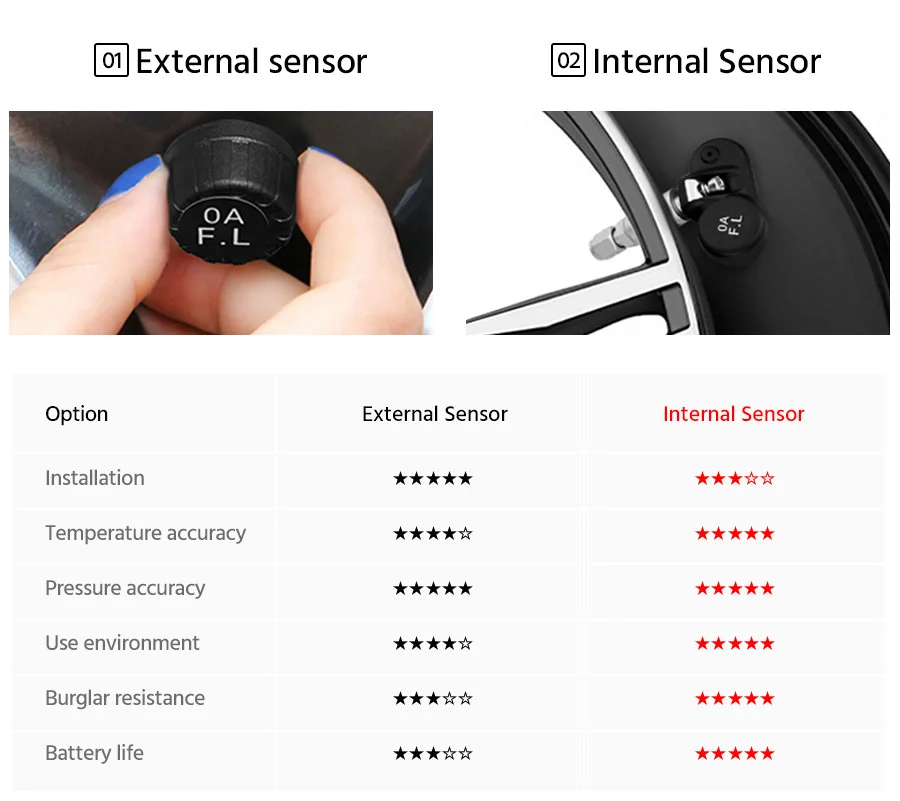 Programming of the ABS unit is carried out, but installation of additional control devices and equipment is not required). In particular, there is no need for additional separate sensors for a winter or summer set of tires).
Programming of the ABS unit is carried out, but installation of additional control devices and equipment is not required). In particular, there is no need for additional separate sensors for a winter or summer set of tires). The problem is trying to be solved by a programmed delay in the notification of a flat tire. If the rotation speed returns to normal, the tire pressure change notification is canceled by the system. From a safety point of view, especially when driving on uneven terrain, this is a very dubious decision.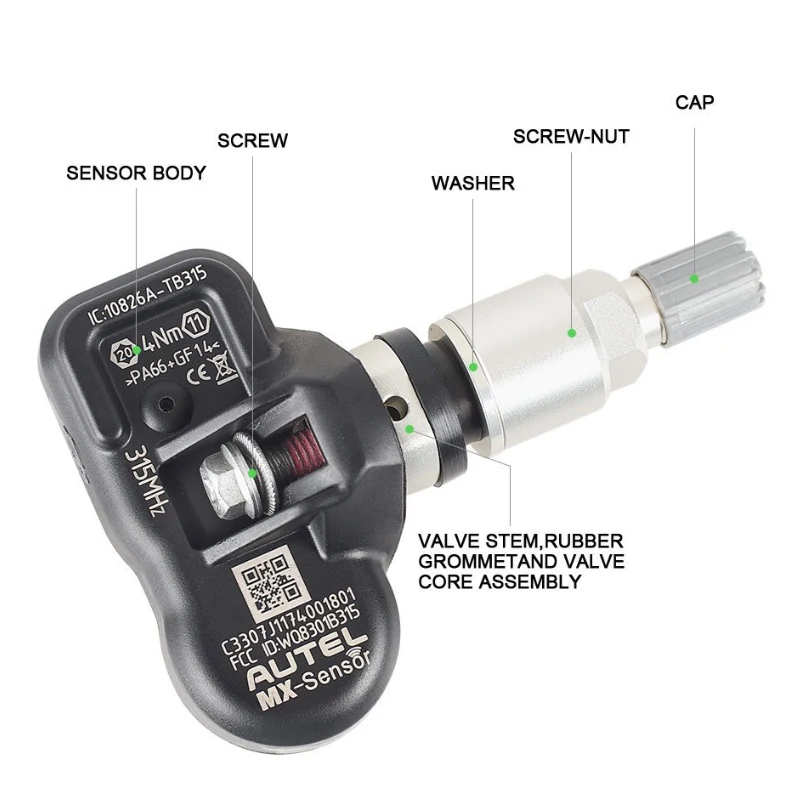
The pressure sensors are directly sent to the central control module in the car.
When the pressure drops below the set value, the indicator is activated.
Combined sensors are mounted, as a rule, on the valves of all wheels (inside or outside) "online" information about all four wheels at the same time, sometimes also the temperature, which may be redundant.
Disadvantages of direct measurement:
The activation procedure for TPMS sensors prompts them to start transmitting data on tire pressure, as well as other parameters that a particular system measures - temperature, sensor battery status.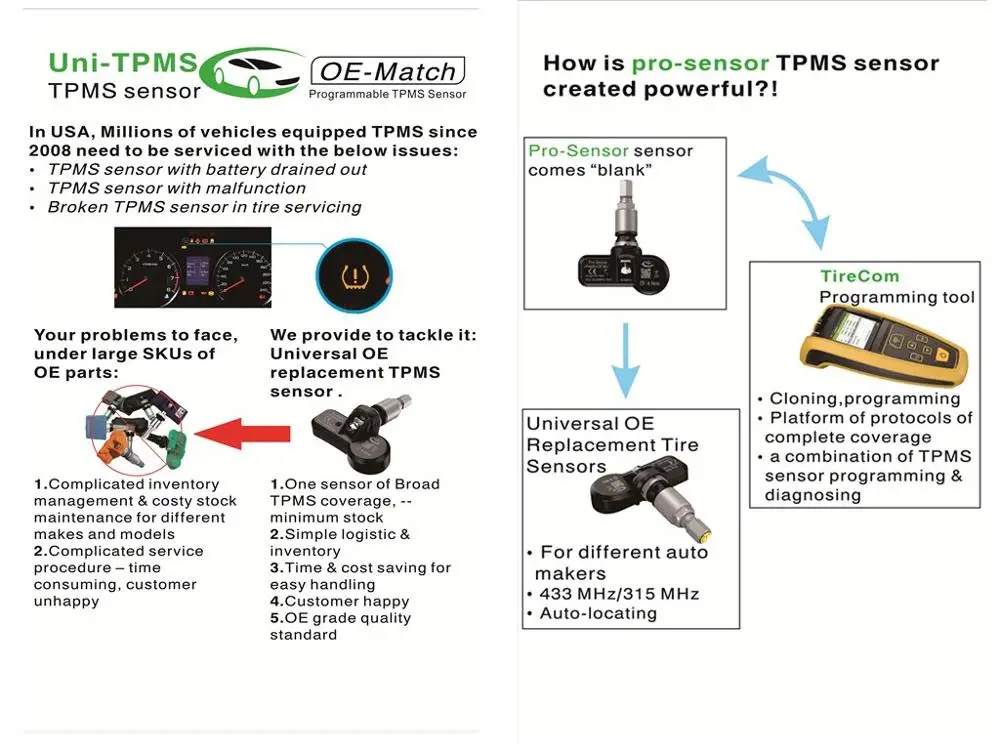
Sensors can be activated in different ways:
1. Through the dashboard.
2. By rapidly inflating or deflating the tire (20 kPa for 10 seconds).
3. By bringing the magnet to the sensor nipple. The triggering occurs when the magnet is brought close to the sensitive area of the sensor. In action is the Lorentz force, which depends on the moduli of particle velocity and magnetic field induction.
For some vehicles, there is a special procedure for linking the sensor to the vehicle using a special device to activate the tire pressure sensors. Sometimes, instead of the device, you can use the procedure for linking by changing tire pressure.
The binding of a new sensor is carried out through a special mode or manually.
When linking the system in Ford cars, for example, this is done like this.
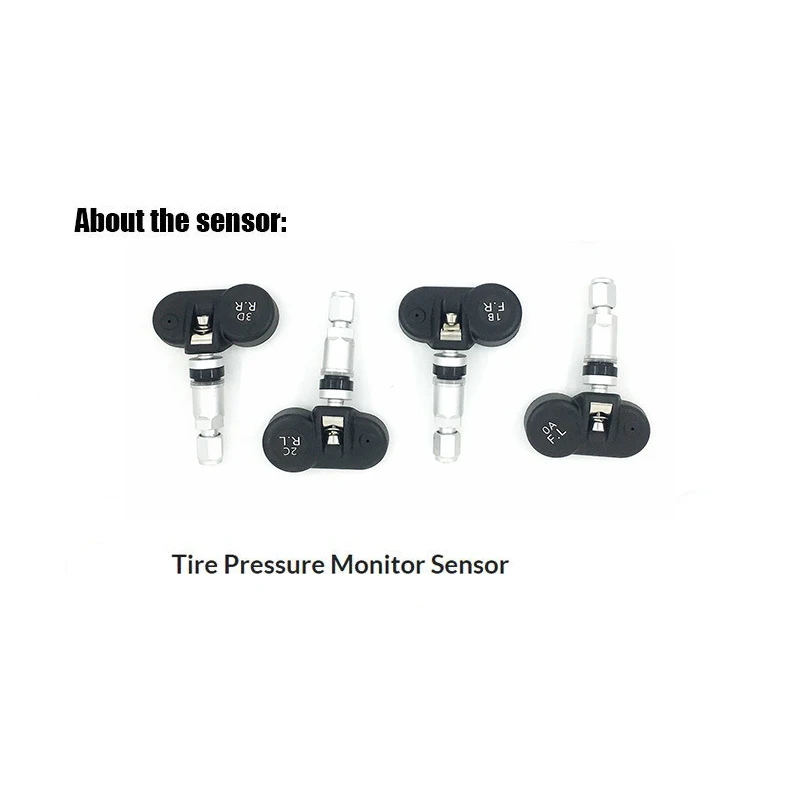
As you can see, there are a lot of features related to the system. An experienced tire fitter should understand:
SENSYS SENSYS Engineering has extensive experience in this area.

For GM vehicles equipped with a tire pressure monitoring system with sensors ( 13581561, 22853740, 20922901, 25809220, 22853740 ) frequency 315 or 433 MHz (TPMS), after replacing the sensor, replacing the remote control receiver module door lock or wheel change, sensor learning must be performed. Procedure training can be performed using this tool EL-50448.
Step 1 - entering the vehicle into the sensor programming mode:
2 step - Prescribing information about the tire pressure sensor
The time for programming the sensors is about two minutes. If you don't make it, the car will give two beeps and you need to repeat starting from the 1st step.
If you don't make it, the car will give two beeps and you need to repeat starting from the 1st step.
Starting from the front left wheel, activate the sensors.
The order of activation is as follows: left front, right front, right rear, left rear.
We bring the device EL 50448 to each wheel sensor according to queue and press the button. The TX indicator will light up, if the programming the wheel, the car will beep. We do this with everyone. wheel.
Declared buckets: 2010 9-5 2010 Acadia, Enclave, OUTLOOK, Traverse (VIN R/V) 2010 Allure, LaCrosse (VIN G) 2010 Antara, Captiva, Terrain, Winstorm 2010 Avalanche, Escalade, Suburban, Tahoe, Yukon (VIN C/K) 2010 Aveo, G3, Barina (VIN S/T) 2010 Buick Excelle 2010 Buick Regal (China) 2010 Camaro (VIN F) 2010 Canyon, Colorado (VIN S/T) 2010 Cobalt, G5 (VIN A) 2010 Corvette (VIN Y) 2010 Cruze (China) 2010 Cruze 2010 CTS (VIN D) 2010 Daewoo Lacetti 2010 DTS (VIN K) 2010 Equinox, Terrain (VIN L) 2010 Express, Savana (VIN G/H) 2010 G6 (VIN Z) 2010 h4/h4T (VIN N) 2010 HHR (VIN A) 2010 Impala (VIN W) 2010 Insignia 2010 LaCrosse (China) 2010 Lucerne (VIN H) 2010 Malibu (VIN Z) 2010 Opel/Vauxhall Astra 2010 Sierra, Silverado (VIN C/K) 2010 SKY, Solstice (VIN M) 2010 SRX (VIN N) 2010 STS (VIN D) 2010 VE/WM - Sedan, Sportwagon, Ute, Lumina, Caprice, HSV 2010 VUE (VIN Z), Captiva Sport 2011 Acadia, Enclave, Traverse (VIN R/V) 2011 Alpheon 2011 Antara, Captiva 2011 Astra 2011 Avalanche, Escalade, Suburban, Tahoe, Yukon (VIN C/K) 2011 Aveo, Barina (VIN S/T) 2011 Buick Excelle 2011 Buick Regal (China) 2011 Camaro (VIN F) 2011 Canyon, Colorado (VIN S/T) 2011 Caprice PPV 2011 Captiva Sport 2011 Corvette (VIN Y) 2011 Cruze 2011 CTS (VIN D) 2011 DTS (VIN K) 2011 Equinox, Terrain (VIN L) 2011 Express Savana (VIN G/H) 2011 HHR (VIN A) 2011 Impala (VIN W) 2011 Insignia 2011 La Crosse (China) 2011 Lucerne (VIN H) 2011 Malibu (VIN Z) 2011 Orlando 2011 Regal (VIN G) 2011 Sierra, Silverado (VIN C/K) 2011 SRX (VIN N) 2011 STS (VIN D) 2011 VE/WM - Sedan, Ute, Sportwagon, Caprice, Lumina, Omega, VXR8 2011 Volt 2012 Acadia, Enclave, Traverse (VIN R/V) 2012 Alpheon (2706) 2012 Ampera, Volt (VIN R) (Europe) 2012 Antara, Captiva 2012 Astra-J (2857) 2012 Avalanche, Escalade, Suburban, Tahoe, Yukon (VIN C/K) 2012 Aveo Classic, Barina Classic (VIN T) 2012 Aveo, Sonic (2777) 2012 Barina (2774) 2012 Buick Excelle (2861) 2012 Camaro (VIN F) 2012 Canyon, Colorado (VIN S/T) 2012 Caprice PPV 2012 Captiva Sport 2012 Chevrolet Cobalt (2809) 2012 Colorado (Other IO), S10 (South America) 2012 Corvette (VIN Y) 2012 Cruze (2863) 2012 CTS (VIN D) 2012 Equinox, Terrain (VIN L) 2012 Express, Savana (VIN G/H) 2012 Impala (VIN W) 2012 Insignia (2707) 2012 La Crosse (China) (2710) 2012 LaCrosse (VIN G) (2709) 2012 Malibu (VIN Z) 2012 Opel Combo D 2012 Optra, Viva (VIN J) 2012 Orlando (2859) 2012 Regal (China) (2711) 2012 Regal (VIN G) (2708) 2012 Sierra, Silverado (VIN C/K) 2012 Sonic (US/Canada) (2775) 2012 SRX (VIN N) 2012 VE/WM - Sedan, Ute, Sportwagon, Caprice, Lumina, VXR8 2012 Verano (US/Canada) (2816) 2012 Volt (VIN R) 2012 Zafira-C (2860) 2013 Acadia, Enclave, Traverse (VIN R/V) (3206) 2013 Alpheon (309)four) 2013 Ampera, Volt (VIN R) (Europe) (3211) 2013 Antara, Captiva (5376555) 2013 Astra-J Convertible/Coupe (5376567) 2013 Astra-J (5376577) 2013 ATS (VIN A) (3086) 2013 Avalanche, Escalade, Suburban, Tahoe, Yukon (VIN C/K) (3088) 2013 Aveo, Sonic (Africa, Middle East, AP, South America, CKD, Mexico) (5376711) 2013 Aveo, Sonic (Europe) (5376704) 2013 Barina (5376837) 2013 Camaro (VIN F) (3106) 2013 Caprice PPV (3105) 2013 Captiva Sport (3101) 2013 Cobalt (3107) 2013 Colorado, Colorado 7, S10, Trailblazer (5392270) 2013 Combo-D 2013 Corvette (VIN Y) (3104) 2013 Cruze (Global) (5377099) 2013 CTS (VIN D) (3085) 2013 Encore (China) (5377162) 2013 Encore, Trax (North America) (5377181) 2013 Equinox, Terrain (VIN L) (3100) 2013 Excelle (5377155) 2013 Express, Savana (VIN G/H) (3103) 2013 Impala (VIN W) (3102) 2013 Insignia (3098) 2013 La Crosse (China) (3095) 2013 LaCrosse (VIN G) (North America) (3090) 2013 Malibu (China) (3096) 2013 Malibu (Europe, Other IO and South America) (2713) 2013 Malibu (North America) (3093) 2013 Mokka, Trax, Tracker (Europe) (5377179) 2013 Onix (3166) 2013 Orlando (Global) (5377530) 2013 Regal (China) (3099) 2013 Regal (VIN G) (North America) (3089) 2013 Sierra, Silverado (VIN C/K) (3087) 2013 Sonic (US/Canada) (5377994) 2013 Spark (US/Canada), Barina Spark (Automatic Transmission) (5421555) 2013 Spin 2013 SRX (VIN N) (3201) 2013 Trax, Tracker (Africa, Australia, Middle East, South America) (5377156) 2013 VE/WM Ute, Caprice, Lumina 2013 Verano (US/Canada) (5377996) 2013 Volt (VIN R) (North America, Holden) (3210) 2013 XTS (China) (3092) 2013 XTS (North America) (3091) 2013 Zafira-Tourer
gm-series-vehicl-20673/ Forum on diagnostics, autoscanners © autoprogs.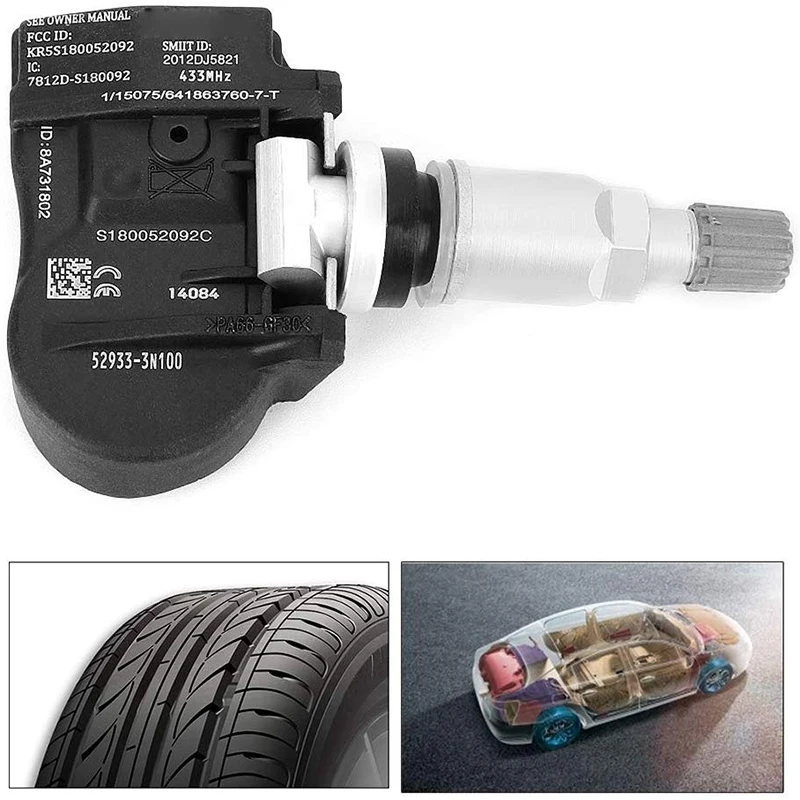 ru
ru
Declared buckets: 2010 9-5 2010 Acadia, Enclave, OUTLOOK, Traverse (VIN R/V) 2010 Allure, LaCrosse (VIN G) 2010 Antara, Captiva, Terrain, Winstorm 2010 Avalanche, Escalade, Suburban, Tahoe, Yukon (VIN C/K) 2010 Aveo, G3, Barina (VIN S/T) 2010 Buick Excelle 2010 Buick Regal (China) 2010 Camaro (VIN F) 2010 Canyon, Colorado (VIN S/T) 2010 Cobalt, G5 (VIN A) 2010 Corvette (VIN Y) 2010 Cruze (China) 2010 Cruze 2010 CTS (VIN D) 2010 Daewoo Lacetti 2010 DTS (VIN K) 2010 Equinox, Terrain (VIN L) 2010 Express, Savana (VIN G/H) 2010 G6 (VIN Z) 2010 h4/h4T (VIN N) 2010 HHR (VIN A) 2010 Impala (VIN W) 2010 Insignia 2010 LaCrosse (China) 2010 Lucerne (VIN H) 2010 Malibu (VIN Z) 2010 Opel/Vauxhall Astra 2010 Sierra, Silverado (VIN C/K) 2010 SKY, Solstice (VIN M) 2010 SRX (VIN N) 2010 STS (VIN D) 2010 VE/WM - Sedan, Sportwagon, Ute, Lumina, Caprice, HSV 2010 VUE (VIN Z), Captiva Sport 2011 Acadia, Enclave, Traverse (VIN R/V) 2011 Alpheon 2011 Antara, Captiva 2011 Astra 2011 Avalanche, Escalade, Suburban, Tahoe, Yukon (VIN C/K) 2011 Aveo, Barina (VIN S/T) 2011 Buick Excelle 2011 Buick Regal (China) 2011 Camaro (VIN F) 2011 Canyon, Colorado (VIN S/T) 2011 Caprice PPV 2011 Captiva Sport 2011 Corvette (VIN Y) 2011 Cruze 2011 CTS (VIN D) 2011 DTS (VIN K) 2011 Equinox, Terrain (VIN L) 2011 Express Savana (VIN G/H) 2011 HHR (VIN A) 2011 Impala (VIN W) 2011 Insignia 2011 La Crosse (China) 2011 Lucerne (VIN H) 2011 Malibu (VIN Z) 2011 Orlando 2011 Regal (VIN G) 2011 Sierra, Silverado (VIN C/K) 2011 SRX (VIN N) 2011 STS (VIN D) 2011 VE/WM - Sedan, Ute, Sportwagon, Caprice, Lumina, Omega, VXR8 2011 Volt 2012 Acadia, Enclave, Traverse (VIN R/V) 2012 Alpheon (2706) 2012 Ampera, Volt (VIN R) (Europe) 2012 Antara, Captiva 2012 Astra-J (2857) 2012 Avalanche, Escalade, Suburban, Tahoe, Yukon (VIN C/K) 2012 Aveo Classic, Barina Classic (VIN T) 2012 Aveo, Sonic (2777) 2012 Barina (2774) 2012 Buick Excelle (2861) 2012 Camaro (VIN F) 2012 Canyon, Colorado (VIN S/T) 2012 Caprice PPV 2012 Captiva Sport 2012 Chevrolet Cobalt (2809) 2012 Colorado (Other IO), S10 (South America) 2012 Corvette (VIN Y) 2012 Cruze (2863) 2012 CTS (VIN D) 2012 Equinox, Terrain (VIN L) 2012 Express, Savana (VIN G/H) 2012 Impala (VIN W) 2012 Insignia (2707) 2012 La Crosse (China) (2710) 2012 LaCrosse (VIN G) (2709) 2012 Malibu (VIN Z) 2012 Opel Combo D 2012 Optra, Viva (VIN J) 2012 Orlando (2859) 2012 Regal (China) (2711) 2012 Regal (VIN G) (2708) 2012 Sierra, Silverado (VIN C/K) 2012 Sonic (US/Canada) (2775) 2012 SRX (VIN N) 2012 VE/WM - Sedan, Ute, Sportwagon, Caprice, Lumina, VXR8 2012 Verano (US/Canada) (2816) 2012 Volt (VIN R) 2012 Zafira-C (2860) 2013 Acadia, Enclave, Traverse (VIN R/V) (3206) 2013 Alpheon (309)four) 2013 Ampera, Volt (VIN R) (Europe) (3211) 2013 Antara, Captiva (5376555) 2013 Astra-J Convertible/Coupe (5376567) 2013 Astra-J (5376577) 2013 ATS (VIN A) (3086) 2013 Avalanche, Escalade, Suburban, Tahoe, Yukon (VIN C/K) (3088) 2013 Aveo, Sonic (Africa, Middle East, AP, South America, CKD, Mexico) (5376711) 2013 Aveo, Sonic (Europe) (5376704) 2013 Barina (5376837) 2013 Camaro (VIN F) (3106) 2013 Caprice PPV (3105) 2013 Captiva Sport (3101) 2013 Cobalt (3107) 2013 Colorado, Colorado 7, S10, Trailblazer (5392270) 2013 Combo-D 2013 Corvette (VIN Y) (3104) 2013 Cruze (Global) (5377099) 2013 CTS (VIN D) (3085) 2013 Encore (China) (5377162) 2013 Encore, Trax (North America) (5377181) 2013 Equinox, Terrain (VIN L) (3100) 2013 Excelle (5377155) 2013 Express, Savana (VIN G/H) (3103) 2013 Impala (VIN W) (3102) 2013 Insignia (3098) 2013 La Crosse (China) (3095) 2013 LaCrosse (VIN G) (North America) (3090) 2013 Malibu (China) (3096) 2013 Malibu (Europe, Other IO and South America) (2713) 2013 Malibu (North America) (3093) 2013 Mokka, Trax, Tracker (Europe) (5377179) 2013 Onix (3166) 2013 Orlando (Global) (5377530) 2013 Regal (China) (3099) 2013 Regal (VIN G) (North America) (3089) 2013 Sierra, Silverado (VIN C/K) (3087) 2013 Sonic (US/Canada) (5377994) 2013 Spark (US/Canada), Barina Spark (Automatic Transmission) (5421555) 2013 Spin 2013 SRX (VIN N) (3201) 2013 Trax, Tracker (Africa, Australia, Middle East, South America) (5377156) 2013 VE/WM Ute, Caprice, Lumina 2013 Verano (US/Canada) (5377996) 2013 Volt (VIN R) (North America, Holden) (3210) 2013 XTS (China) (3092) 2013 XTS (North America) (3091) 2013 Zafira-Tourer
gm-series-vehicl-20673/ Forum on diagnostics, autoscanners © autoprogs.